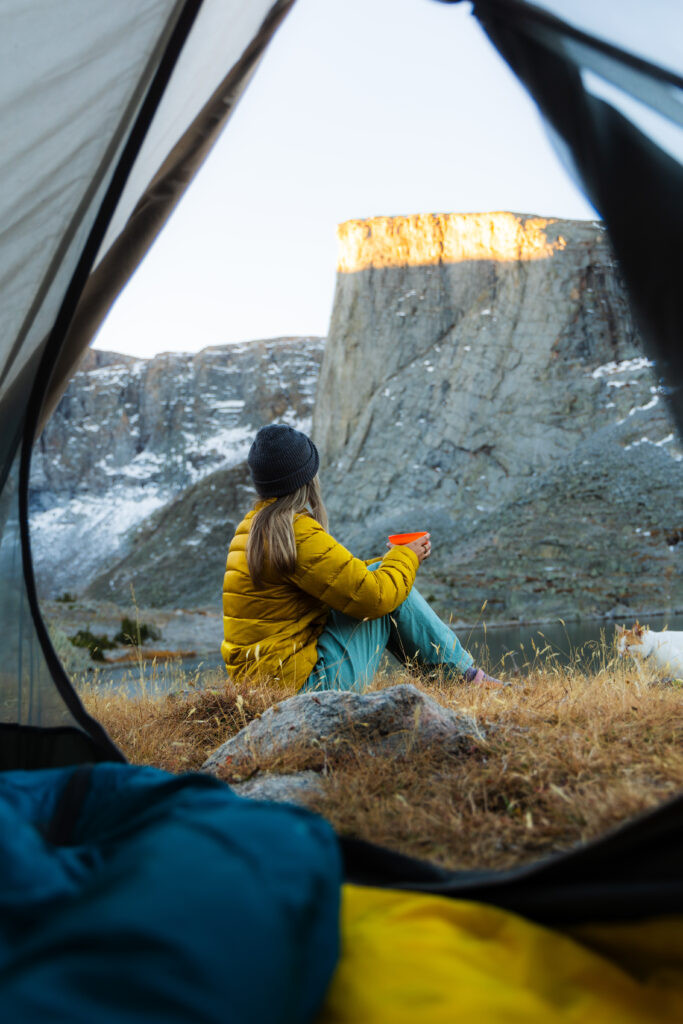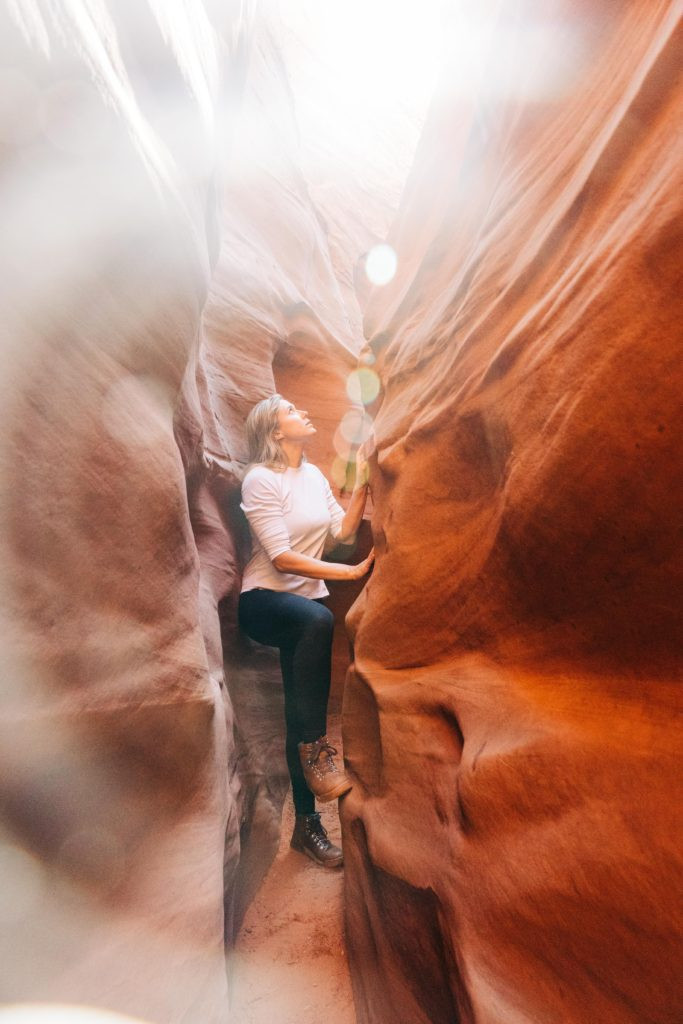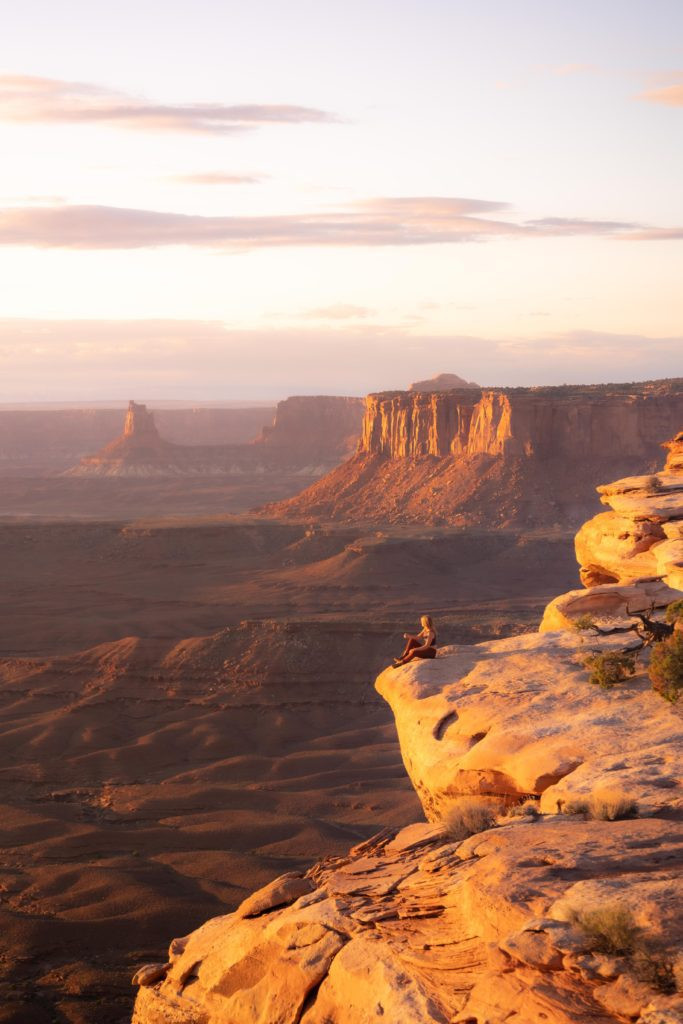Taking Instagrammable photos isn’t just about luck; it’s about understanding key elements and applying them strategically. At dfphoto.net, we’ll show you how to master angles, poses, and editing to create visually stunning images that capture attention and boost your online presence. Let’s explore professional photography tips, composition techniques and image enhancing tools and techniques.
1. Understanding the Fundamentals of Instagram Photography
Crafting the perfect Instagram photo involves more than just pointing and shooting. It’s about understanding the interplay of various elements, including composition, lighting, and subject matter. These factors combine to create images that are not only visually appealing but also resonate with your audience.
1.1. Mastering Composition Techniques
Composition is the backbone of any captivating photograph. It dictates how the elements within the frame are arranged to guide the viewer’s eye and convey a message. Several techniques can help you achieve a balanced and engaging composition:
- Rule of Thirds: As highlighted by photography experts, the Rule of Thirds involves dividing your frame into nine equal parts using two horizontal and two vertical lines. Placing key elements along these lines or at their intersections creates a more dynamic and visually interesting composition.
- Leading Lines: Utilize lines—whether they are roads, rivers, or architectural elements—to draw the viewer’s eye into the scene. Leading lines add depth and direction to your photos, making them more engaging.
- Symmetry and Patterns: Incorporating symmetry or repeating patterns can create a sense of order and visual harmony. Look for these elements in nature, architecture, or even in everyday objects.
- Framing: Use elements within the scene to create a frame around your subject. This technique isolates the subject and adds depth to the image, drawing the viewer’s attention to what’s important.
1.2. Leveraging Natural Light
Lighting is perhaps the most crucial element in photography. Natural light, in particular, can dramatically enhance the mood and quality of your images. Understanding how to use natural light effectively can transform an ordinary photo into an extraordinary one.
- Golden Hour: The hour after sunrise and the hour before sunset, known as the golden hour, provide soft, warm light that is ideal for portraits and landscapes. The angle of the sun during these times creates long shadows and a flattering glow.
- Blue Hour: The period just before sunrise and just after sunset, known as the blue hour, offers cool, soft light that is perfect for capturing cityscapes and landscapes. The sky takes on a deep blue hue, adding a magical quality to your photos.
- Overcast Days: Don’t shy away from shooting on overcast days. The diffused light eliminates harsh shadows and provides even illumination, making it ideal for portraits and detailed shots.
- Avoiding Harsh Sunlight: Direct sunlight can create harsh shadows and blown-out highlights. If you must shoot in direct sunlight, try using a diffuser or finding shade to soften the light.
1.3. Selecting Compelling Subjects
The subject of your photo should be engaging and tell a story. Whether it’s a person, a place, or an object, choose subjects that evoke emotion and capture the viewer’s imagination. Here are some tips for selecting compelling subjects:
- Unique Perspectives: Look for unusual angles or viewpoints that offer a fresh perspective on familiar subjects.
- Interesting Details: Focus on small details that might otherwise go unnoticed. These details can add depth and intrigue to your photos.
- Storytelling: Capture moments that tell a story. Candid shots of people interacting or scenes that convey a sense of place can be particularly compelling.
- Personal Connection: Choose subjects that resonate with you personally. Your passion for the subject will shine through in your photos.
2. Gear Essentials for Instagram-Worthy Shots
While skill and creativity are essential, having the right equipment can significantly enhance the quality of your Instagram photos. Here’s a breakdown of the gear that can help you capture stunning images:
2.1. Smartphone Cameras: Advancements and Capabilities
Modern smartphones boast impressive camera capabilities that rival traditional cameras. The latest models feature high-resolution sensors, advanced image processing, and versatile lens options. According to a 2024 report by the Santa Fe University of Art and Design’s Photography Department, smartphones are increasingly favored by amateur and professional photographers alike for their convenience and quality.
- High Resolution: Opt for smartphones with at least 12 megapixels for detailed and sharp images.
- Multiple Lenses: Many smartphones now offer multiple lenses, including wide-angle, telephoto, and macro lenses, providing versatility for various shooting scenarios.
- Advanced Features: Look for features like optical image stabilization (OIS), HDR mode, and low-light performance enhancements.
- Computational Photography: Smartphone cameras utilize computational photography techniques to enhance image quality, such as automatically adjusting settings and reducing noise.
2.2. DSLR and Mirrorless Cameras: The Professional Edge
For those seeking professional-grade image quality and creative control, DSLR (Digital Single-Lens Reflex) and mirrorless cameras are excellent choices. These cameras offer larger sensors, interchangeable lenses, and manual control over settings.
- DSLR Cameras:
- Canon EOS 80D: A versatile DSLR known for its excellent image quality, fast autofocus, and user-friendly interface. Ideal for both beginners and experienced photographers. The Canon 80D typically costs around $1000 for the body and kit lens.
- Mirrorless Cameras:
- Sony Alpha a6000: A compact and lightweight mirrorless camera that delivers exceptional image quality and fast autofocus. Perfect for travel and everyday photography. The Sony a6000 is priced around $879.
- Key Features:
- Sensor Size: Full-frame or APS-C sensors offer superior image quality and dynamic range compared to smartphone cameras.
- Interchangeable Lenses: Choose from a wide range of lenses to suit different shooting scenarios, from wide-angle landscapes to telephoto portraits.
- Manual Control: Adjust aperture, shutter speed, and ISO to fine-tune your images and achieve the desired effect.
- Image Stabilization: Built-in image stabilization reduces camera shake and allows for sharper images, especially in low-light conditions.
2.3. Essential Accessories for Enhanced Photography
In addition to a good camera, several accessories can help you take your Instagram photography to the next level:
- Tripods: Provide stability and reduce camera shake, especially in low-light conditions or when shooting long exposures.
- External Lighting: Portable LED lights or flashes can provide additional illumination when natural light is insufficient.
- Lens Filters: Polarizing filters reduce glare and enhance colors, while neutral density (ND) filters allow for longer exposures in bright light.
- Remote Shutters: Allow you to trigger the camera remotely, preventing camera shake and making it easier to take self-portraits.
- Portable Power Banks: Keep your devices charged on the go, ensuring you never miss a photo opportunity.
 Smartphone capturing the sunset, emphasizing its camera capabilities
Smartphone capturing the sunset, emphasizing its camera capabilities
3. Mastering Posing Techniques for Flattering Photos
Posing is an art in itself, and knowing how to pose effectively can make a significant difference in your Instagram photos. The key is to find poses that are natural, flattering, and that reflect your personality.
3.1. Natural and Candid Poses
Authenticity is key in Instagram photography. Avoid overly staged or forced poses, and instead focus on capturing genuine moments. According to a 2023 study by Popular Photography magazine, candid shots tend to receive higher engagement rates on social media.
- Movement: Incorporate movement into your poses, such as walking, laughing, or interacting with your surroundings.
- Relaxation: Encourage your subjects to relax and be themselves. A relaxed subject will appear more natural and confident in photos.
- Candid Moments: Capture candid moments when your subjects are not aware of the camera. These spontaneous shots often reveal genuine emotions and personality.
- Interaction: Have your subjects interact with each other or with their environment. This can create a sense of connection and tell a story.
3.2. Flattering Angles and Body Positioning
Understanding how to use angles and body positioning can help you create flattering photos that accentuate your best features.
- Elongate the Body: Encourage your subjects to stand up straight and elongate their bodies. This can make them appear taller and slimmer.
- Angle the Body: Avoid standing straight towards the camera. Angling the body slightly can create a more dynamic and flattering pose.
- Chin Up: Tilting the chin up slightly can help define the jawline and create a more confident look.
- Weight Distribution: Shifting weight to one leg can create a more relaxed and natural pose.
- Avoid Awkward Poses: Be mindful of awkward poses that can make your subjects appear uncomfortable or unnatural.
3.3. Posing for Different Body Types
Different body types require different posing techniques to look their best. Here are some tips for posing for various body types:
- Curvy Figures:
- Embrace Curves: Encourage your subjects to embrace their curves and show off their natural shape.
- Define Waist: Use poses that define the waistline, such as placing hands on the hips or wearing a belt.
- Avoid Straight-On Shots: Avoid standing straight towards the camera, as this can make the body appear wider.
- Slim Figures:
- Add Volume: Use poses that add volume to the body, such as wearing layers or creating curves with the arms and legs.
- Avoid Overly Loose Clothing: Avoid wearing overly loose clothing that can make the body appear shapeless.
- Experiment with Angles: Experiment with different angles to find poses that accentuate the body’s natural lines.
- Athletic Figures:
- Show Off Muscles: Use poses that show off the body’s athletic build, such as flexing muscles or engaging in physical activity.
- Avoid Stiff Poses: Avoid stiff poses that can make the body appear rigid.
- Focus on Movement: Focus on capturing dynamic movement that highlights the body’s strength and agility.
 Woman posing naturally on the beach, emphasizing candid photography techniques
Woman posing naturally on the beach, emphasizing candid photography techniques
4. Editing Techniques to Enhance Your Instagram Photos
Editing is a crucial step in transforming your photos from good to great. While it’s important to maintain a natural look, strategic editing can enhance colors, improve clarity, and create a cohesive aesthetic for your Instagram feed.
4.1. Essential Editing Apps and Software
Numerous editing apps and software are available, each offering a unique set of features and tools. Here are some of the most popular options:
- Adobe Lightroom: A professional-grade editing software that offers a wide range of tools for adjusting exposure, color, and detail. Available for both desktop and mobile devices. A monthly photography plan with Adobe costs around $10, offering access to Lightroom, Mobile Lightroom, and Photoshop.
- VSCO: A mobile app with a variety of filters and editing tools. Known for its subtle and film-like effects.
- Snapseed: A free mobile app developed by Google that offers a comprehensive set of editing tools, including selective adjustments and healing brushes.
- Photoshop: The industry-standard photo editing software that provides advanced tools for retouching, compositing, and creating special effects.
- Afterlight: A mobile app with a clean and user-friendly interface. Offers a variety of filters, textures, and adjustment tools.
4.2. Basic Adjustments: Exposure, Contrast, and White Balance
Before applying filters or presets, it’s essential to make basic adjustments to your photos. These adjustments can significantly improve the overall quality and impact of your images.
- Exposure: Adjust the overall brightness of your photo. Increase exposure to brighten a dark image or decrease exposure to darken an overexposed image.
- Contrast: Adjust the difference between the light and dark areas of your photo. Increasing contrast can make your photo appear more vibrant and dynamic, while decreasing contrast can create a softer, more muted look.
- White Balance: Adjust the color temperature of your photo to ensure that whites appear white. Correcting white balance can eliminate unwanted color casts and create a more natural look.
- Highlights and Shadows: Adjust the brightness of the highlights and shadows in your photo. Recovering highlights can bring back detail in bright areas, while lifting shadows can reveal detail in dark areas.
- Clarity and Texture: Adjust the clarity and texture of your photo to enhance details and create a more defined look.
4.3. Color Correction and Grading
Color plays a crucial role in the mood and aesthetic of your photos. Color correction involves adjusting the colors in your photo to create a more accurate and natural look, while color grading involves applying stylistic color adjustments to create a specific mood or effect.
- Saturation: Adjust the intensity of the colors in your photo. Increasing saturation can make colors appear more vibrant, while decreasing saturation can create a more muted or desaturated look.
- Vibrance: Adjust the intensity of the more muted colors in your photo. Vibrance is similar to saturation but is more subtle and natural-looking.
- Hue: Adjust the specific colors in your photo. Shifting the hue can create dramatic color changes and unique effects.
- Split Toning: Add different colors to the highlights and shadows of your photo. Split toning can create a subtle and sophisticated look.
- Color Grading: Use color grading tools to create a specific mood or aesthetic for your photos. Experiment with different color combinations and effects to find a style that suits your taste.
4.4. Retouching and Spot Removal
Retouching and spot removal can help you eliminate distractions and create a cleaner, more polished look for your photos.
- Spot Removal: Use the spot removal tool to remove blemishes, dust spots, and other unwanted distractions from your photo.
- Healing Brush: Use the healing brush to blend imperfections seamlessly into the surrounding area.
- Cloning Tool: Use the cloning tool to copy pixels from one area of your photo to another. This can be useful for removing larger distractions or filling in gaps.
- Skin Smoothing: Use skin smoothing tools to reduce the appearance of wrinkles and blemishes. Be careful not to overdo it, as this can create an unnatural look.
- Frequency Separation: Use frequency separation techniques to retouch skin and other areas of your photo while preserving texture and detail.
4.5. Creating a Consistent Aesthetic
Maintaining a consistent aesthetic is essential for creating a cohesive and visually appealing Instagram feed. Here are some tips for achieving a consistent aesthetic:
- Choose a Color Palette: Select a color palette that you love and stick to it. This can help create a unified look for your feed.
- Use Presets or Filters: Use presets or filters to apply consistent adjustments to your photos. This can save time and ensure that your photos have a similar look and feel.
- Edit Similarly: Edit your photos in a similar way, using the same settings and adjustments. This can help create a cohesive aesthetic.
- Plan Your Feed: Use a feed planning app to visualize how your photos will look together. This can help you ensure that your feed is visually balanced and appealing.
 Before and after editing example showing enhancements in color and clarity
Before and after editing example showing enhancements in color and clarity
5. Finding Unique Locations and Perspectives
In the age of social media, finding unique locations and perspectives is more important than ever. To stand out on Instagram, you need to go beyond the typical tourist spots and discover hidden gems that will wow your followers.
5.1. Researching Off-the-Beaten-Path Locations
- Local Guides: Connect with local guides and photographers who can provide insights into lesser-known locations.
- Online Communities: Join online communities and forums dedicated to travel and photography. These communities often share tips and recommendations for unique locations.
- Google Maps: Use Google Maps to explore areas that are off the beaten path. Look for natural landmarks, historical sites, and other interesting features.
- Instagram Exploration: Use Instagram’s explore feature to discover new locations and perspectives. Search for hashtags related to your destination and see what others have captured.
- Travel Blogs: Read travel blogs and articles for inspiration and ideas. Many travel bloggers share their experiences and recommendations for unique locations.
5.2. Exploring Urban Environments
Urban environments offer a wealth of opportunities for unique and creative photography.
- Architectural Details: Focus on capturing the intricate details of buildings and other structures.
- Street Art: Explore street art and graffiti scenes for colorful and edgy photo opportunities.
- Hidden Alleys: Discover hidden alleys and backstreets for a more intimate and authentic look at the city.
- Rooftops: Seek out rooftops and other elevated vantage points for panoramic views of the city.
- Night Photography: Capture the city at night for dramatic and atmospheric photos.
5.3. Embracing Nature and Landscapes
Nature and landscapes offer endless possibilities for stunning Instagram photos.
- Golden Hour and Blue Hour: Take advantage of the golden hour and blue hour for soft, warm light and dramatic skies.
- Waterfalls and Rivers: Capture the beauty of waterfalls and rivers for dynamic and captivating photos.
- Mountains and Forests: Explore mountains and forests for breathtaking views and tranquil scenes.
- Deserts and Canyons: Discover the unique landscapes of deserts and canyons for otherworldly photo opportunities.
- Wildlife Photography: Capture the beauty of wildlife in their natural habitats.
5.4. Playing with Angles and Perspectives
- Low Angles: Shoot from low angles to make your subjects appear larger and more imposing.
- High Angles: Shoot from high angles to capture a bird’s-eye view of your surroundings.
- Unusual Perspectives: Experiment with unusual perspectives to create unique and unexpected compositions.
- Reflections: Use reflections to add depth and interest to your photos.
- Framing: Use natural elements to frame your subjects and draw the viewer’s eye.
 Person overlooking a vast canyon at sunset, showcasing a unique perspective
Person overlooking a vast canyon at sunset, showcasing a unique perspective
6. Telling a Story Through Your Instagram Feed
Your Instagram feed is more than just a collection of pretty pictures; it’s a canvas for storytelling. By crafting a cohesive narrative, you can engage your audience on a deeper level and create a more meaningful connection.
6.1. Defining Your Brand and Aesthetic
- Target Audience: Identify your target audience and tailor your content to their interests and preferences.
- Mission Statement: Define your mission statement and use it to guide your content creation.
- Visual Style: Develop a consistent visual style that reflects your brand and aesthetic.
- Voice and Tone: Establish a consistent voice and tone for your captions and interactions.
- Values and Beliefs: Communicate your values and beliefs through your content.
6.2. Curating a Cohesive Feed
- Color Palette: Choose a color palette that complements your brand and aesthetic.
- Theme: Develop a theme for your feed, such as travel, fashion, food, or lifestyle.
- Grid Layout: Plan your grid layout to create a visually appealing and balanced feed.
- Consistent Editing: Use consistent editing techniques to create a cohesive look and feel.
- Variety: Incorporate a variety of content, such as photos, videos, and stories, to keep your feed engaging.
6.3. Writing Engaging Captions
- Storytelling: Use your captions to tell stories and share insights.
- Questions: Ask questions to encourage engagement and interaction.
- Call to Action: Include a call to action to encourage your followers to take a specific action.
- Hashtags: Use relevant hashtags to increase the visibility of your posts.
- Emojis: Use emojis to add personality and emotion to your captions.
6.4. Utilizing Instagram Stories and Reels
- Behind-the-Scenes: Share behind-the-scenes content to give your followers a glimpse into your life.
- Tutorials and Tips: Share tutorials and tips related to your niche.
- Interactive Content: Use polls, quizzes, and other interactive features to engage your followers.
- Trending Sounds and Challenges: Participate in trending sounds and challenges to increase your visibility.
- Collaborations: Collaborate with other creators to reach new audiences.
6.5. Engaging with Your Audience
- Respond to Comments: Respond to comments and messages in a timely manner.
- Ask Questions: Ask questions to encourage interaction and discussion.
- Run Contests and Giveaways: Run contests and giveaways to reward your followers and attract new ones.
- Collaborate with Other Creators: Collaborate with other creators to reach new audiences and expand your network.
- Show Appreciation: Show appreciation for your followers and acknowledge their support.
 Example of a curated Instagram feed with a consistent aesthetic
Example of a curated Instagram feed with a consistent aesthetic
7. Overcoming Common Challenges in Instagram Photography
Even with the best gear and techniques, you may encounter challenges along the way. Here are some common issues and how to overcome them:
7.1. Dealing with Bad Lighting Conditions
- Use Reflectors: Use reflectors to bounce light onto your subject and fill in shadows.
- Use External Lighting: Use external lighting to provide additional illumination when natural light is insufficient.
- Shoot at Golden Hour or Blue Hour: Take advantage of the soft, warm light of the golden hour or the cool, soft light of the blue hour.
- Edit Your Photos: Use editing techniques to correct exposure and white balance issues.
- Change Your Location: If possible, move to a location with better lighting conditions.
7.2. Avoiding Overcrowded Locations
- Visit During Off-Peak Hours: Visit popular locations during off-peak hours to avoid crowds.
- Explore Lesser-Known Spots: Seek out lesser-known spots that are less crowded and offer unique photo opportunities.
- Use Perspective: Use perspective to minimize the appearance of crowds in your photos.
- Edit Out Distractions: Use editing techniques to remove unwanted people and distractions from your photos.
- Be Patient: Be patient and wait for the right moment to capture your shot without crowds.
7.3. Maintaining Authenticity
- Be Yourself: Be yourself and let your personality shine through in your photos and captions.
- Share Your Story: Share your story and connect with your audience on a personal level.
- Avoid Over-Editing: Avoid over-editing your photos and maintain a natural look.
- Be Transparent: Be transparent about your brand and your values.
- Engage Authentically: Engage with your audience authentically and build genuine relationships.
7.4. Staying Inspired
- Follow Other Creators: Follow other creators who inspire you and learn from their work.
- Experiment with New Techniques: Experiment with new techniques and push yourself outside of your comfort zone.
- Take Breaks: Take breaks from Instagram to recharge and refocus.
- Explore New Locations: Explore new locations and discover new photo opportunities.
- Attend Workshops and Events: Attend workshops and events to learn from experts and connect with other creators.
 Overcoming crowded locations and capturing the desired shot
Overcoming crowded locations and capturing the desired shot
8. Legal and Ethical Considerations
As an Instagram photographer, it’s essential to be aware of the legal and ethical considerations surrounding your work.
8.1. Copyright and Intellectual Property
- Copyright Protection: Understand your rights as a photographer and protect your work from unauthorized use.
- Permissions and Releases: Obtain necessary permissions and releases when photographing people or private property.
- Fair Use: Understand the concept of fair use and how it applies to your work.
- Creative Commons: Consider using Creative Commons licenses to share your work while retaining certain rights.
- Watermarking: Use watermarking to protect your images from unauthorized use.
8.2. Privacy and Consent
- Respect Privacy: Respect the privacy of others and avoid taking photos without their consent.
- Informed Consent: Obtain informed consent from individuals before photographing them, especially in sensitive situations.
- Minors: Be especially careful when photographing minors and obtain consent from their parents or guardians.
- Public Spaces: Be aware of the rules and regulations regarding photography in public spaces.
- Cultural Sensitivity: Be sensitive to cultural norms and customs when photographing in different regions.
8.3. Disclosure and Transparency
- Sponsored Content: Disclose when your content is sponsored or paid for.
- Affiliate Links: Disclose when you use affiliate links and may earn a commission.
- Product Reviews: Be transparent about your product reviews and disclose any relationships with the brands.
- Editing Practices: Be transparent about your editing practices and avoid misleading your audience.
- Authenticity: Maintain authenticity and avoid promoting products or services that you don’t believe in.
8.4. Responsible Travel Photography
- Respect Local Cultures: Respect local cultures and customs when traveling and photographing in different regions.
- Environmental Responsibility: Be environmentally responsible and avoid damaging natural environments.
- Ethical Wildlife Photography: Practice ethical wildlife photography and avoid disturbing animals in their natural habitats.
- Support Local Communities: Support local communities and businesses when traveling.
- Promote Sustainable Tourism: Promote sustainable tourism practices and encourage others to travel responsibly.
By following these legal and ethical guidelines, you can create Instagram photos that are not only visually stunning but also responsible and respectful.
9. Staying Updated with the Latest Trends and Technologies
The world of Instagram photography is constantly evolving, with new trends and technologies emerging all the time. To stay ahead of the curve, it’s essential to stay updated with the latest developments.
9.1. Following Industry Leaders and Influencers
- Identify Key Influencers: Identify key influencers and industry leaders in your niche.
- Follow Their Content: Follow their content on Instagram and other social media platforms.
- Engage with Their Content: Engage with their content by liking, commenting, and sharing their posts.
- Attend Their Events: Attend their events and workshops to learn from them in person.
- Network with Them: Network with them online and offline to build relationships and expand your knowledge.
9.2. Participating in Online Communities and Forums
- Join Relevant Communities: Join relevant online communities and forums related to Instagram photography.
- Engage in Discussions: Engage in discussions and share your knowledge and insights.
- Ask Questions: Ask questions and seek advice from other members.
- Share Your Work: Share your work and get feedback from other members.
- Network with Other Creators: Network with other creators and build relationships.
9.3. Attending Workshops and Conferences
- Identify Relevant Events: Identify relevant workshops and conferences related to Instagram photography.
- Attend Sessions and Workshops: Attend sessions and workshops to learn from experts and gain new skills.
- Network with Other Attendees: Network with other attendees and build relationships.
- Visit Exhibitions: Visit exhibitions and see the latest gear and technologies.
- Stay Updated on Trends: Stay updated on the latest trends and technologies.
9.4. Subscribing to Newsletters and Blogs
- Identify Relevant Newsletters and Blogs: Identify relevant newsletters and blogs related to Instagram photography.
- Subscribe to Their Content: Subscribe to their content and stay updated on the latest news and trends.
- Read Articles and Tutorials: Read articles and tutorials to learn new techniques and improve your skills.
- Follow Their Social Media Accounts: Follow their social media accounts to stay updated on their latest posts.
- Share Their Content: Share their content with your followers to spread the word.
9.5. Experimenting with New Apps and Tools
- Explore New Apps and Tools: Explore new apps and tools related to Instagram photography.
- Test Their Features: Test their features and see how they can enhance your workflow.
- Read Reviews: Read reviews from other users to get insights into their pros and cons.
- Share Your Findings: Share your findings with your followers and recommend your favorite apps and tools.
- Stay Updated on Updates: Stay updated on their latest updates and new features.
By staying updated with the latest trends and technologies, you can continue to grow as an Instagram photographer and create content that is fresh, innovative, and engaging.
10. Building a Successful Instagram Photography Business
For those passionate about photography, turning your hobby into a business can be incredibly rewarding. Here’s how to build a successful Instagram photography business:
10.1. Defining Your Niche and Target Audience
- Identify Your Passion: Identify your passion within photography, such as travel, fashion, food, or portraits.
- Research the Market: Research the market and identify potential gaps and opportunities.
- Define Your Target Audience: Define your target audience based on demographics, interests, and needs.
- Create a Unique Selling Proposition: Create a unique selling proposition that differentiates you from the competition.
- Develop Your Brand: Develop your brand, including your name, logo, and visual style.
10.2. Creating a Business Plan
- Executive Summary: Write an executive summary that summarizes your business plan.
- Company Description: Describe your company and its mission, vision, and values.
- Market Analysis: Analyze the market and identify your target audience and competitors.
- Products and Services: Describe your products and services, including your pricing and packaging.
- Marketing and Sales Strategy: Develop a marketing and sales strategy to reach your target audience.
- Financial Projections: Create financial projections, including your revenue, expenses, and profitability.
- Management Team: Describe your management team and their qualifications.
- Funding Request: If necessary, include a funding request and describe how you will use the funds.
10.3. Pricing Your Services
- Research Market Rates: Research market rates for photography services in your area.
- Calculate Your Costs: Calculate your costs, including your equipment, software, travel, and time.
- Determine Your Profit Margin: Determine your desired profit margin.
- Create Pricing Packages: Create pricing packages that cater to different client needs and budgets.
- Be Flexible: Be flexible with your pricing and be willing to negotiate with clients.
10.4. Marketing Your Business
- Optimize Your Instagram Profile: Optimize your Instagram profile with a clear bio, profile picture, and website link.
- Create High-Quality Content: Create high-quality content that showcases your best work and attracts your target audience.
- Use Relevant Hashtags: Use relevant hashtags to increase the visibility of your posts.
- Engage with Your Audience: Engage with your audience by liking, commenting, and sharing their posts.
- Run Contests and Giveaways: Run contests and giveaways to attract new followers and generate leads.
- Collaborate with Other Businesses: Collaborate with other businesses to cross-promote your services and reach new audiences.
- Attend Networking Events: Attend networking events to meet potential clients and partners.
- Use Paid Advertising: Use paid advertising to reach a wider audience and generate leads.
10.5. Managing Client Relationships
- Communicate Effectively: Communicate effectively with your clients and keep them informed throughout the process.
- Set Clear Expectations: Set clear expectations regarding your services, pricing, and timeline.
- Deliver High-Quality Work: Deliver high-quality work that meets or exceeds your clients’ expectations.
- Be Professional: Be professional and courteous in all your interactions with clients.
- Ask for Feedback: Ask for feedback and use it to improve your services.
- Build Long-Term Relationships: Build long-term relationships with your clients and encourage them to refer you to others.
By following these steps, you can build a successful Instagram photography business and turn your passion into a profitable career.
Visit dfphoto.net today to discover more tips, tricks, and resources for mastering Instagram photography. Join our community of passionate photographers and take your skills to the next level! Address: 1600 St Michael’s Dr, Santa Fe, NM 87505, United States. Phone: +1 (505) 471-6001. Website: dfphoto.net.
Frequently Asked Questions (FAQs)
-
What are the key elements of an Instagrammable photo?
Angles, posing, and editing are essential. Master these to create visually appealing images that capture attention.
-
How important is the Rule of Thirds in photography?
It’s very important. The Rule of Thirds helps create a more dynamic and visually interesting composition by placing key elements off-center.
-
Is it better to over-pose or be natural in photos?
Being natural is better. Overly posed photos can look awkward. Candid moments that capture real emotions are more engaging.
-
What is the golden hour, and why is it good for photography?
The golden hour is the hour after sunrise and before sunset. It provides soft, warm light ideal for portraits and landscapes.
-
Why is editing important, and what are some basic adjustments I should make?
Editing enhances colors and clarity. Basic adjustments include exposure, contrast, and white balance to improve overall image quality.
-
How can I find unique locations for Instagram photos?
Research off-the-beaten-path locations through local guides, online communities, and exploring urban or natural environments.
-
What are some essential accessories for enhancing photography?
Tripods, external lighting, lens filters, and remote shutters are essential for improved stability and lighting.
-
How can I tell a story through my Instagram feed?
Define your brand, curate a cohesive feed with a consistent aesthetic, write engaging captions, and utilize Instagram Stories and Reels.
-
What are some legal and ethical considerations for Instagram photographers?
Copyright protection, privacy and consent, disclosure and transparency, and responsible travel photography are key ethical considerations.
-
How do I stay updated with the latest trends and technologies in Instagram photography?
Follow industry leaders, participate in online communities, attend workshops, subscribe to newsletters, and experiment with new apps and tools.

